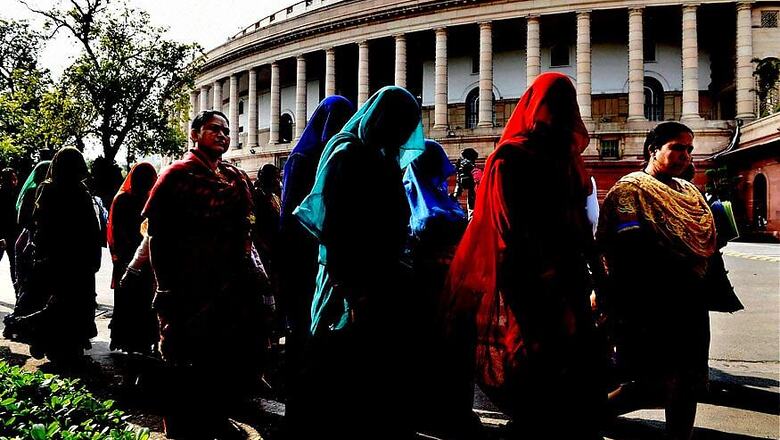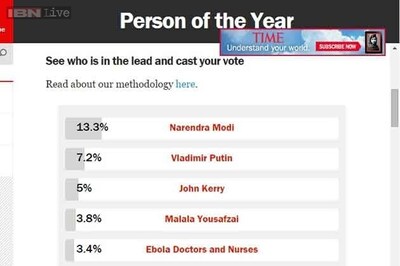
views
A budget for a better India, a budget that focuses on women’s empowerment- this was the message from the Prime Minister to 48% of India’s population; a group that as per the PM’s own admission, is one he considers underprivileged.
But apart from the routine mention of schemes for women, is this really a gender-equal budget, one that will truly economically empower India’s women?
The concept of gender budgeting is not new to India. In practice since 2005, the idea factors in the grim reality that, for women access to facilities and resources remains the biggest challenge. Gender budgeting is supposed to reflect and address that issue by ensuring the government is literally putting money where its mouth is.
It’s a concept that at least 16 states in India adopt every year and one that the Centre reportedly adhered to in this budget as well. However, is a mere 5% of a budget that focuses on women enough to help usher in empowerment? A boost for the Women and child development ministry
The Maneka Gandhi run ministry has received a 27% increase in budget allocation this year. From being allotted `17,640 crore last year, this year its expenditure limit is at `22,095 crore- an announcement that quickly led to the ministry proclaiming this as a #Budget4Women. While this is an improvement on the funds allocated to the ministry, the question is how much of this will be spent on women-centric policies. Focus on expecting mothers
The government has announced an increased corpus for the Indira Gandhi Matritva Sahyog Yojana- a four times jump with `2,700 crore being set aside this year as compared to `634 crore in 2016-17. As per this scheme `6,000 will be given to mothers who seek institutionalized delivery and vaccination- a cue from the PM’s demonetisation announcement to expand maternity benefits for women. But this scheme has been criticized in the past for being non-inclusive and as one that alienates a large group of women based on the lengthy list of eligibility conditions. But, how many women will actually benefit from this announcement? Is it really going to be a pan-India scheme that all women will be able to take advantage of?Skill development for women
Finance minister Arun Jaitley has also announced the setting up of Mahila Shakti Kendras at village levels. Each one of these centers will be linked to about 14 lakh Anganwadi centres. The budgetary allocation is `500 crores for this project.
As per the Finance Minister, ‘this is expected to be a one stop convergent support service for empowering rural women with opportunities for skill development, employment, digital literacy, health and nutrition.’ The government believes that such a centre will increase the access of essential services for women.
The task at hand is, however, gargantuan. How exactly is one anganwadi supposed to provide all of these services to local women while also continuing to look after the health and nutrition of rural children? Does this corpus include provisions for the hiring of more staff? What about the facilities that will be necessary to provide any kind of skill training?
Also, math is mind-boggling. `500 crores for 14 lakh anganwadi means each center gets a paltry sum of `3571. How will this figure encompass anything that is close to sufficient for training a group of women? How can you empower someone when you haven’t provided the means to do the same?
A recent ILO report pegged the gender wage gap in India at an alarmingly high 30%- one of the worst in the world. To even begin to try to bridge this gap, the country would need to, for starters, look at women beyond their childbearing capabilities and that begins with ensuring that opportunities for skill development are more than mere optics. MNREGA and women empowerment
This year the Mahatma Gandhi National Rural Employment Guarantee Act has been allotted `48,000 crore - a 25% hike, as being suggested by the government. But activists maintain that this increase is a mere 1%, as last year’s budgetary allocation was later revised and increased.
But the controversy of numbers aside, the Centre maintains that 55% of women are now benefitting from this scheme. Research has validated this claim- with many surveys indicating that this employment scheme has helped empower women financially, made them more independent and self-sufficient.
Under MGNREGA one-third of the employment opportunities are reserved for women. Now, for this positive trajectory to continue, the government would need to invest more in this scheme, that by its own admission, has been a success. The Nirbhaya Fund
The Nirbhaya Fund has seen a 9 fold jump in budgetary allocation- `28.9 crore is the corpus set aside for this year. Now despite the controversy over the underutilization of this fund and the Centre’s denial of this allegation, this years allocation was done reportedly at the behest of the police.
Their agenda is to reportedly install many more CCTV cameras (a reactive and not a preventive measure), facilitate self-defence classes for women, among other things.
The ministry that controls disbursals for this fund is the Women and Child Development Ministry. As per that department, about `400 crores has been spent so far, out of a corpus of 1530 crores from previous years.
There is little clarity as to what is being done about the remaining 1130 crores, its utilisation and the actual results we are seeing on the ground and now, add to this a figure of an additional `28 crores.
The question is does the Centre have a blueprint to ensure that this money is being spent in the right direction and not lying 'without interest' as a dormant fixed deposit.




















Comments
0 comment